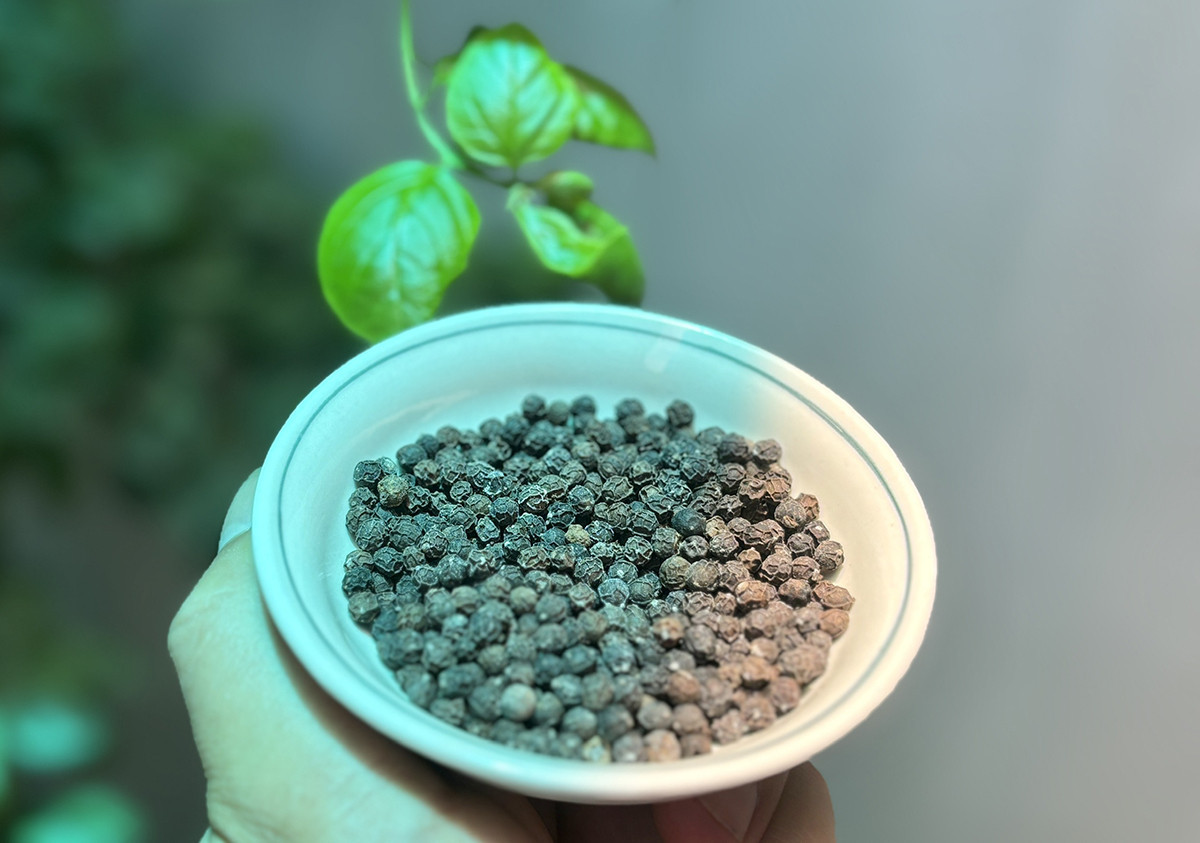
Nearly a decade ago, pepper prices began rising all over the world. The upward trend started in 2010 and reached its peak in 2015, when one ton of pepper sold for VND230 million. At that time, the value of one ton of dry black pepper was equal to 6.5 taels of gold.
This was why pepper was called Vietnam’s black gold as it brought billions of dollars in export turnover.
However, after reaching its peak, the prices quickly went down and have been dropping sharply since. In 2019, one ton of pepper sold at VND36 million only, which meant the fall of 85 percent in price.
The prices moved up a little in 2020, but stayed at low levels until 2024.
Pepper has become more expensive since the beginning of the year, and analysts say that this is the second pepper rush in history.
Vietnam holds the largest pepper stock in the world with output accounting for 40 percent and exports 60 percent of the global market.
Many countries have increased their purchases by 2-3 times, pushing Vietnam’s pepper prices up. Vietnamese experts said pepper has entered a new upward period after a long period of bottoming out.
They predict that the upward cycle may last more than a decade and the prices may soar to VND350,000-400,000 per kilogram.
In the first half of June, Vietnam’s pepper peaked at VND180,000 per kilogram on June 12 in the domestic market. The prices slid rapidly later, but have regained the upward trend recently, now traded at VND156,000-162,000 per kilogram.
Meanwhile, the pepper prices keep rising in the world market. 500g/l black pepper has seen the price surge to $7,800 per ton, while 550g/l to $8,000. White pepper prices have made a new record when climbing to $12,000 per ton.
Vietnam’s black pepper is more expensive than Indonesian, Malaysian and Brazilian products ($1,582, $3,100 and $400 per ton, respectively). White pepper prices are $3,623 per ton higher than Indonesia’s and $4,700 more than Malaysia’s.
If compared with the beginning of the year, black pepper prices have increased by 100 percent, and white pepper by 110.5 percent.
According to VPSA (Vietnam Pepper and Spice Association), Vietnam’s pepper output in 2024 is predicted to decrease by 10 percent compared with 2023 to VND170,000 tons, a 5-year low.
Meanwhile, the General Department of Customs (GDC) reported that by the end of May 2024, Vietnam had exported 110,000 tons of pepper of different kinds, reaping $469 million.
The export volume decreased by 16.8 percent, while export value increased by 15.4 percent thanks to the price surge.
If not counting the inventories carried forward from last year, Vietnam still has 60,000 tons of pepper to export in the last months of the year.
VPSA chair Hoang Thi Lien said farmers are still keeping pepper in their warehouses, but they don’t intend to sell pepper in large quantities.
At present, they are selling pepper in dribs and drabs, while still listening to the situation. Some farmers have even postponed sales, hearing about the price escalation in the world market.
Lien said in late May, pepper prices stood at VND140,000 per kilogram. Meanwhile, just within the first 10 days of June, pepper once hit VND180,000 per kilogram.
She said that prices may go down a little, but won’t fall to the previous price levels.
As for businesses, Lien said they find it difficult to collect and sell pepper. The supply in the domestic market is not high, while exporters signed contracts many days ago at fixed prices and now cannot collect pepper to fulfill the contracts.
A pepper exporter told VietNamNet that Vietnam’s pepper harvest ended in April. The pepper growing area has narrowed as farmers have shifted to plant other crops after a period of incurring losses.
Meanwhile, the global market lacks nearly 100,000 tons.
With the shortage, countries have increased their imports, especially China.
Vietnam’s pepper exports to China last May reached 3,137 tons, or 4.8 times higher than the previous month. This was the highest export volume in the last 11 months.
Tam An